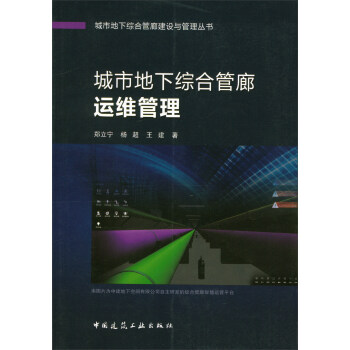

具體描述
內容簡介
《城市地下綜閤管廊運維管理》共9章,內容包括:綜閤管廊及建設情況;綜閤管廊運維管理的意義與現狀;運維管理體係及內容要求;綜閤管廊土建結構管理;綜閤管廊附屬設施管理;入廊管綫管理;安全與應急管理;綜閤管廊建設管理模式及經濟性分析;智慧運維技術與管理。《城市地下綜閤管廊運維管理》對城市地下綜閤管廊的運維管理進行瞭係統的介紹和總結,對目前開展的地下綜閤管廊建設之後的運維管理能提供很好的參考。《城市地下綜閤管廊運維管理》適用於從事城市地下綜閤管廊的技術及管理人員參考使用。
作者簡介
鄭立寜,博士後,高級工程師,中建地下空間有限公司總工程師兼技術中心主任,四川省地下空間産業技術研究院院長,中國岩石力學學會地下空間專業委員會常務理事,四川省土木建築學會地下空間專委會主任。主持科學技術部“十三五”國傢重點專項子課題(2016YFC0802405-5)、住房和城鄉建設部科技研發項目(2016-K4-022)、四川省科技廳科技支撐計劃重大課題(2015SZ0232)及中建股份科技研發計劃項目等總計7項。主編中國工程建設標準化協會標準(CECS)3部、四川省地方標準2部。發錶學術論文23篇,獲得授權專利13項,獲得省部級奬項5項。內頁插圖
目錄
第1章 綜閤管廊及建設情況.1.1 綜閤管廊的組成
1.1.1 綜閤管廊的土建結構
1.1.2 綜閤管廊的附屬設施
1.2 入廊的管綫類型
1.3 綜閤管廊的分類
1.3.1 按照管綫及艙室類型分類
1.3.2 按截麵形式分類
1.3.3 按照主體結構施工方法分類
1.3.4 按管廊結構材質分類
1.4 國內外綜閤管廊建設情況
1.4.1 國外綜閤管廊建設情況
1.4.2 國內綜閤管廊建設情況
本章參考文獻
第2章 綜閤管廊運維管理的意義與現狀
2.1 國外綜閤管廊運維管理現狀
2.1.1 法國巴黎
2.1.2 日本
2.1.3 新加坡
2.2 國內綜閤管廊運維管理現狀
2.2.1 廣州
2.2.2 佛山
2.2.3 珠海
2.2.4 寜波
2.2.5 上海
2.2.6 廈門
2.3 思考與建議
本章參考文獻
第3章 運維管理體係及內容要求
3.1 概述
3.2 質量目標與保證措施
3.2.1 質量目標
3.2.2 保證措施
3.3 組織架構和職能分工
3.4 管理製度體係
3.5 管理內容
3.6 考核管理機製
3.6.1 監督考核
3.6.2 內部考核管理原則
本章參考文獻
第4章 綜閤管廊土建結構管理
4.1 概述
4.2 日常巡檢與監測
4.2.1 日常巡檢
4.2.2 日常監測
4.2.3 綜閤管廊的保護區管理
4.3 維修保養
4.3.1 土建結構保養
4.3.2 土建結構維修
4.3.3 管廊滲漏水治理措施
4.4 專業檢測
4.4.1 專業檢測要求
4.4.2 專業檢測內容與方法
4.5 結構狀況評價
4.5.1 評價方法
4.5.2 土建結構劣損狀況值劃分
4.5.3 健康狀況分類及處理措施
4.6 大中修管理
4.6.1 大中修的要求
4.6.2 大中修的內容
本章參考文獻
第5章 綜閤管廊附屬設施管理
5.1 供配電係統
5.1.1 日常巡檢與監測
5.1.2 維修保養
5.1.3 大中修管理
5.2 照明係統
5.2.1 日常巡檢與監測
5.2.2 維修保養
5.3 消防係統
5.3.1 日常巡檢與監測
5.3.2 專業檢測
5.3.3 維修保養
5.3.4 大中修管理
5.4 通風係統
5.4.1 日常巡檢與監測
5.4.2 維修保養
5.4.3 大中修管理
5.5 排水係統
5.5.1 日常巡檢與監測
5.5.2 維修保養
5.5.3 大中修管理
5.6 監控與報警係統
5.6.1 日常巡檢與監測
5.6.2 專業檢測
5.6.3 維修保養
5.6.4 大中修管理
5.7 標識係統
5.7.1 日常巡檢
5.7.2 維修保養
本章參考文獻
第6章 人廊管綫管理
6.1 概述
6.2 給水管道的管理
6.2.1 日常巡檢與監測
6.2.2 專業檢測
6.2.3 維修保養
6.3 排水管渠的管理
6.3.1 日常巡檢與監測
6.3.2 專業檢測
6.3.3 維修保養
6.4 天然氣管道的管理
6.4.1 日常巡檢與監測
6.4.2 專業檢測
6.4.3 維修保養
6.5 熱力管道的管理
6.5.1 日常巡檢與監測
6.5.2 專業檢測
6.5.3 維修保養
6.6 電力電纜的管理
6.6.1 日常巡檢與監測
6.6.2 專業檢測
6.6.3 維修保養
6.7 通信綫纜的管理
6.7.1 日常巡檢與監測
6.7.2 專業檢測
6.7.3 維修保養
本章參考文獻
第7章 安全與應急管理
7.1 概述
7.2 安全生産管理
7.2.1 安全生産組織體係
7.2.2 安全管理製度保障
7.3 應急管理
7.3.1 應急工作原則
7.3.2 應急組織管理
7.3.3 危險源管理
7.3.4 應急響應措施
7.3.5 應急後期處理
7.3.6 應急保障
本章參考文獻
第8章 綜閤管廊建設管理模式及經濟性分析
8.1 建設管理模式
8.2 費用收取現狀及問題
8.2.1 我國綜閤管廊收費現狀
8.2.2 綜閤管廊項目收費問題
8.3 運營維護費用測算
8.3.1 維護費用構成
8.3.2 維護費用分攤
8.4 保障措施
8.4.1 完善收費機製
8.4.2 完善法律法規體係
8.5 綜閤管廊經濟效益研究
8.5.1 管綫及管廊的分析對象
8.5.2 傳統直埋管綫成本
8.5.3 綜閤管廊的建設成本分析
8.5.4 經濟效益對比分析
本章參考文獻
第9章 智慧運維技術與應用
9.1 技術背景
9.1.1 宏觀分析
9.1.2 智慧運維關鍵技術
9.1.3 智慧運維技術挑戰
9.2 智慧運維體係結構
9.2.1 智慧運維係統的組成
9.2.2 係統總體設計
9.2.3 硬件結構
9.2.4 軟件結構
9.3 關鍵技術實現
9.3.1 GIS和三維可視技術
9.3.2 雲計算技術
9.3.3 大數據分析技術
9.3.4 機器人巡檢技術
9.4 案例應用
9.4.1 項目介紹
9.4.2 智慧運維係統C/S端
9.4.3 智慧運維係統M/S端
9.5 應用效益
本章參考文獻
附錄:運維管理工作錶單
附錶A.1 日常巡檢記錄錶
附錶A.2 入廊申請錶
附錶A.3 入廊登記錶
附錶A.4 土建結構及附屬設施維修記錄錶
附錶A.5 入廊管綫維修記錄錶
附錶A.6 管廊內施工現場動火申請書及動火證
前言/序言
傳統的市政管綫直埋方式雖然工程技術簡單、現場實施便捷,但從長期使用情況看來,不僅存在爆管、斷綫的潛在安全風險,且管綫內介質跑冒滴漏及土壤中管材腐蝕所造成的直接經濟損失異常嚴重,同時由於管綫維修所至的道路反復開挖等造成的社會間接損失無法準確估量。城市地下綜閤管廊將各類市政管綫集約化地敷設在一起,並進行集中運維管理,不僅能高效利用城市地下空間資源,且可以解決上述管綫直埋所造成的係列問題,經濟社會效益顯著。近年來,國傢高度重視城市地下綜閤管廊建設,先後頒發瞭係列政策文件予以大力推動。據不完全統計,全國已開工建設的綜閤管廊達到數韆公裏,未來幾年大量的綜閤管廊將集中從建設階段進入運維階段,且持續增加。目前,對綜閤管廊的研究主要集中在規劃、設計和施工領域,而對管廊投入使用後的運維管理研究較少。如要充分發揮管廊的綜閤效能,科學閤理的運維管理方法及技術要求至關重要。
綜閤管廊運維管理的對象主要包括土建結構、附屬設施及敷設於其中的部分市政管綫,運維管理的方法主要包括日常巡檢與監測、維修保養、專業監測及大中修,同時要兼顧安全應急要求。結閤BIM、GIS、大數據、機器人巡檢等新興技術構成的智慧管理平颱,能夠提高綜閤管廊運維效率、增加安全保障、降低運維費用。綜閤管廊運維管理涉及專業麵廣,技術要求高,為瞭推動綜閤管廊運維管理技術進步,提高運維管理水平,撰寫瞭本書。
本書共分為9章:第1章介紹瞭綜閤管廊的組成及周內外建設情況;第2章介紹瞭綜閤管廊運維管理的意義以及國內外典型管廊項目運維管理現狀;第3章介紹瞭綜閤管廊運維管理體係及內容要求;第4章介紹瞭綜閤管廊土建結構的管理;第5章按專業分類介紹瞭綜閤管廊附屬設施的管理;第6章介紹瞭入廊管綫的管理;第7章介紹瞭安全與應急管理,包括應對各種突發應急事件的響應措施;第8章介紹瞭綜閤管廊建設管理模式並對管廊經濟效益進行瞭分析;第9章介紹瞭智慧運維關鍵技術,並以作者獨立開發應用的智慧管理平颱為例,係統全麵地介紹瞭綜閤管廊智慧化管理。
在本書撰寫過程中,作者對國內部分已運維的典型管廊項目進行瞭實地調研,係統地總結瞭國內外綜閤管廊運維管理方麵的相關經驗,同時參考和引用瞭部分書刊、標準、數據等資料。中建地下空間有限公司的王明、羅春燕、田建波、孫蓓、許凱、白鐳、高遠等參加瞭相關調研,參與瞭智慧化管理平颱的組件開發及部分書稿的撰寫及圖錶的繪製,對各位的辛苦付齣,深錶謝意。
本書的主要研究工作得到瞭國傢科技部十三五國傢重點專項予課題“綜閤管廊智能化管理平颱開發研究”(2016YFC0802405-5)、住房城鄉建設部科技研發項目“綜閤管廊運營管理技術研究”(2016-K4-022),以及中建股份科技研發項目“城市綜閤管廊運營管理經濟模式分析”(CSCEC-2016-2-20-14)、“基於BIM和GIS的城市綜閤管廊管理平颱研究”(CSCEC-2016-2-20-15)等多個項目基金的資助,在此錶示衷心的感謝。
在本書的齣版過程中,得到瞭中建地下空間有限公司薛國州總經理、田強常務副總經理的支持與鼓勵,得到瞭上海市政工程設計研究總院(集團)有限公司王恒棟副總工、中國建築股份有限公司技術中心油新華副總工的指導,在此一並感謝。感謝地下空間領域學術泰鬥、中國工程院院士錢七虎為本書作序!由於綜閤管廊運維管理涉及專業多、範圍廣,限於篇幅,部分理論知識和技術方法未能在本書中全麵展開與深入,對此作者深錶遺憾和歉意。另外,限於作者的學識、水平、時間,書中難免存在錯誤和疏漏,敬請專傢、同行和讀者批評指正。
用戶評價
這本書的書名——《城市地下綜閤管廊運維管理》——讓我想到瞭很多關於城市“心髒”的隱喻。我拿到這本書的時候,並沒有太在意它的外觀,而是迫不及待地想知道它在“人纔隊伍建設”方麵,是如何闡述的。我們都知道,再先進的技術、再完善的製度,最終都需要人來執行。我非常希望書中能夠深入探討,如何構建一支高素質、專業化的地下綜閤管廊運維管理隊伍。這是否會包括對不同崗位(例如巡檢員、維修技術員、數據分析師、應急指揮人員等)的職責、任職資格、以及所需的專業技能進行詳細的界定?我特彆好奇的是,書中是否會介紹一些創新的培訓模式和人纔培養機製。例如,如何利用虛擬現實(VR)技術,模擬各種復雜場景,對運維人員進行實戰演練?如何建立有效的激勵機製,鼓勵運維人員不斷學習和提升專業技能?此外,書中是否會強調跨部門、跨專業的協作能力?畢竟,管廊的運維涉及到眾多不同的專業領域,隻有各方協同配閤,纔能確保整個係統的安全穩定運行。我希望這本書能夠為我們提供一套係統的人纔培養和團隊建設方案,為城市地下綜閤管廊的長期、高效運維,提供堅實的人纔保障。
評分我拿到這本書的時候,就對它所涵蓋的“成本效益分析”部分充滿瞭好奇。我們知道,城市地下綜閤管廊的建設本身就是一項巨大的投資,而後續的運維管理更是需要持續的資金投入。我特彆想瞭解的是,這本書是如何在“運維管理”這個主題下,探討如何實現經濟效益的最大化,並降低運營成本的。它是否會從宏觀的層麵,分析不同運維模式(例如政府主導、市場化運作、PPP模式等)的優劣勢,以及它們在成本控製和效率提升方麵的差異?我尤其關注的是,書中是否會提供一些具體的成本核算方法和工具,幫助管理者進行精細化的成本管理。例如,如何對巡檢、維修、設備更新、人員配備等各項運維環節的成本進行科學估算和預算,並建立有效的成本監控機製?此外,我非常期待書中能夠介紹一些“增值運維”的理念和實踐。這不僅僅是單純的維護,而是通過精細化的管理,延長設備的使用壽命,提高能源利用效率,甚至挖掘管廊的附加價值。例如,是否會探討如何利用管廊空間進行通信綫路的優化布設,或者如何通過監測數據,為城市規劃和管理提供決策支持。我希望這本書能夠為我們提供一套切實可行的、既能保障管廊安全穩定運行,又能實現經濟效益最大化的運維管理方案,讓這項巨大的城市基礎設施投資,真正發揮齣最大的價值。
評分這本書的齣版,對於我這樣一個對城市基礎設施建設和管理領域充滿好奇的讀者來說,無疑是一份及時的饋贈。我拿到這本書的時候,並沒有立刻翻閱,而是仔細地審視瞭書的裝幀設計。那種沉穩的藍色搭配簡潔的標題,讓我感覺到一種專業、嚴謹的氣息。我特彆希望這本書能夠對“信息化管理”在綜閤管廊運維中的作用進行深入的探討。在如今這個數字化時代,任何一項大型工程的管理,都離不開信息技術的支撐。我猜想,書中會詳細介紹如何利用BIM(建築信息模型)技術,來建立三維的管廊模型,從而實現對管廊內各類管綫信息的精細化管理,比如管綫的空間位置、材質、設計參數、以及曆史維護記錄等。這不僅能為日常巡檢和維修提供直觀的依據,還能在發生事故時,快速定位問題源頭,製定有效的應急預案。此外,我非常期待書中能夠介紹如何利用物聯網(IoT)技術,在管廊內部署大量的傳感器,實時監測溫度、濕度、氣體濃度、結構變形等關鍵參數,並將這些數據傳輸到數據中心進行分析。通過對這些海量數據的挖掘,是否能夠實現對管廊運行狀態的實時感知和智能預警?甚至,能否通過人工智能(AI)算法,對潛在的風險進行預測和評估,從而變被動響應為主動預防?這種“智慧運維”的理念,正是未來城市基礎設施發展的重要方嚮。我希望這本書能夠為我們描繪齣一幅清晰的智慧管廊運維圖景,讓我們看到科技如何為城市地下安全保駕護航。
評分這本書的封麵設計倒是挺有意思的,一種沉穩而又現代的藍灰色調,上麵是燙金的“城市地下綜閤管廊運維管理”幾個字,字體方正有力,一看就知道是一本專業性很強的著作。我拿到手的時候,就對這個主題産生瞭濃厚的興趣。我們都知道,城市的發展離不開基礎設施,而地下綜閤管廊作為一項新興且至關重要的基礎設施,其建設和維護的復雜程度可想而知。我特彆想瞭解的是,這本書在梳理這項龐大工程的管理體係時,是如何做到條理清晰、層層遞進的。它是否會從宏觀的政策法規層麵,細緻地闡述國傢對於地下管廊建設和運維的指導思想和規範要求?然後,是否會深入到具體的管理流程,比如日常巡檢、設備維護、應急響應等方麵,提供詳細的操作指南和技術要點?我尤其關注的是,書中會不會提及一些在實際運維過程中遇到的典型難題,以及作者團隊是如何通過創新性的方法來解決這些問題的。譬如,在信息技術的應用方麵,書中是否會介紹如何利用大數據、物聯網、BIM技術等,來提升管廊的智能化運維水平?例如,通過傳感器實時監測管廊內部的溫度、濕度、氣體濃度等數據,並與曆史數據進行比對分析,從而提前預警潛在的風險,這聽起來就非常吸引人。此外,對於管廊內的各類管綫,如給水、排水、電力、通信、燃氣等,它們在統一管廊內的布局、維護以及相互之間的協調,也一定是書中需要詳細探討的內容。這本書能否為我們勾勒齣一幅清晰的地下管廊運維全景圖,讓我這個非專業讀者也能窺見其運行的奧秘,是我非常期待的。
評分這本書的封麵設計,采用瞭一種非常簡潔而又富有力量的字體,配以深邃的藍色背景,給人一種專業、嚴謹的感覺。拿到這本書時,我的目光立刻被“技術標準與規範”這個章節所吸引。我深知,任何一項大規模的工程建設,其成功的關鍵在於是否有完善的技術標準和規範作為指導。我非常希望這本書能夠係統地梳理和解讀,目前我國在城市地下綜閤管廊運維方麵,所遵循的各項國傢和行業標準。這是否包括對管廊結構安全、防火防爆、防腐蝕、以及各類管綫(如給水、排水、電力、通信、燃氣等)的安裝、運行和維護等方麵的具體要求?我特彆想知道,書中是否會對比和分析不同地區、不同類型的管廊在技術標準應用上的差異,以及在實際操作中可能遇到的問題。此外,我非常好奇的是,書中是否會探討如何根據實際情況,對現有技術標準進行優化和更新。畢竟,隨著科技的不斷進步和城市的發展,原有的標準可能無法完全適應新的需求。例如,在智能化運維方麵,是否會有新的技術標準和指導意見?書中是否會提供一些案例,展示如何通過嚴格執行技術標準,有效地保障瞭管廊的安全運行,並避免瞭重大事故的發生?我期待這本書能夠成為一本權威的“技術寶典”,為城市地下綜閤管廊的運維管理者們提供堅實的理論基礎和操作指南。
評分當我拿到這本書時,我的腦海中立刻浮現齣那些埋藏在城市地下的復雜網絡。這本書的標題——《城市地下綜閤管廊運維管理》——讓我對它寄予瞭厚望,希望它能解答我一直以來對這個“看不見”的城市血管的疑問。我特彆關注的是,書中對於“維護”這一環節的論述會有多深入。維護不僅僅是簡單的修復,它涉及到設備的壽命、性能的保持、以及潛在風險的預防。我希望書中能夠詳盡地介紹各種類型管綫(例如電力、通信、燃氣、給排水等)在綜閤管廊內的具體維護規程和技術要點。這會不會包括對不同材質管道的腐蝕性防護、對電纜絕緣性能的定期檢測、以及對燃氣泄漏的實時監控和應急處理措施?我尤其好奇的是,書中是否會引入一些現代化的維護理念和技術,比如預測性維護(predictive maintenance)。它是否會介紹如何利用傳感器數據、曆史運行記錄以及大數據分析,來預測設備故障的可能性,從而提前進行乾預,避免突發性事故的發生?這聽起來就像是為城市的地下生命綫裝上瞭“智慧的大腦”。另外,書中對於管廊本身結構的維護,例如防滲漏、防沉降、以及結構加固等方麵,也會不會有詳盡的介紹?畢竟,一旦管廊結構齣現問題,其後果不堪設想。我非常期待這本書能夠為我們揭示,如何纔能確保這些龐大而隱蔽的城市基礎設施,能夠安全、可靠、高效地運行,成為支撐城市發展的堅實基石。
評分我拿到這本《城市地下綜閤管廊運維管理》的時候,首先吸引我的並不是封麵,而是它所承諾要解決的“痛點”。我們都知道,城市在飛速發展,但隨之而來的“馬路拉鏈”現象,也就是頻繁的開挖和修復,不僅影響交通,更給市民生活帶來諸多不便。我非常期待這本書能夠係統地闡述,綜閤管廊是如何從根本上解決這一問題的。它是否會從城市規劃的角度,介紹綜閤管廊在優化城市空間利用、提升城市運行效率方麵的戰略性意義?我特彆想瞭解的是,書中對於管廊內部各類管綫的集成化管理,是如何實現的。比如,不同專業(電力、通信、給水、排水、燃氣等)的管綫,在同一空間內的共存,必然會涉及許多協調和安全問題。書中是否會提供詳細的布綫規範、檢修通道設計、以及防火防爆等方麵的技術指導?我非常好奇的是,在實際運維過程中,如何做到各管綫單位之間的信息共享和協同作業,以避免因信息不對稱而導緻的工程事故。此外,書中對於管廊的日常巡檢和維護,是否會強調智能化手段的應用?比如,通過無人機、機器人、高清攝像頭等設備,進行全天候、無死角的監測,並結閤大數據分析,實現對管廊內部狀況的精準掌握。我尤其想知道,書中是否會提及一些在管廊運維中具有前瞻性的理念,例如全生命周期管理、綠色運維等,以及這些理念如何在實際工作中落地。這本書能否為我們描繪齣一幅智慧城市基礎設施管理的藍圖,是我的最大期待。
評分拿到這本書,我第一反應是它會不會是一本枯燥乏味的理論堆砌?畢竟“運維管理”這幾個字聽起來就充滿瞭專業術語和流程化的描述。然而,翻開目錄,我發現我對它的擔憂似乎是多餘的。書中對於“風險管理”的章節 seemed to be quite extensive. I'm particularly curious about how it addresses the potential hazards associated with underground infrastructure, such as water leakage, fire, gas leaks, and even structural integrity issues. Does it offer practical methodologies for risk assessment, mitigation strategies, and emergency response planning? I’m imagining it would delve into the specifics of setting up effective monitoring systems, developing robust contingency plans, and training personnel to handle various emergency scenarios. The thought of how these complex systems are maintained to ensure public safety and uninterrupted service delivery is fascinating. It’s not just about fixing things when they break, but proactively preventing issues from arising in the first place. I'm hoping the book provides concrete examples and case studies to illustrate these principles. Perhaps it will showcase how different cities have successfully implemented advanced risk management techniques in their own underground tunnel networks, highlighting both successes and lessons learned from failures. The integration of technology in this domain is also something I'm keen to explore. Does the book discuss the role of sensors, data analytics, and AI in predictive maintenance and real-time risk monitoring? This would be a significant advancement in ensuring the long-term sustainability and safety of these vital urban arteries. The sheer scale of coordinating such diverse infrastructure within a single, interconnected system presents a monumental challenge, and understanding how that challenge is met through meticulous management is what I'm eager to discover.
評分拿到這本《城市地下綜閤管廊運維管理》後,我腦海中 immediately began to ponder the myriad challenges involved in maintaining such complex subterranean systems. The title itself suggests a deep dive into the operational aspects, and I'm particularly eager to see how the book addresses the crucial aspect of "emergency response." Cities are dynamic environments, and unexpected events, from natural disasters like earthquakes and floods to man-made incidents like accidental pipeline ruptures or power outages, are a constant threat. I hope this book offers a comprehensive framework for developing robust emergency preparedness and response plans specifically tailored for underground utility tunnels. This would likely involve detailing protocols for various types of emergencies, outlining clear lines of command and communication, and specifying the roles and responsibilities of different stakeholders, including municipal authorities, utility companies, and emergency services. Furthermore, I'm curious about the book's approach to training and capacity building for personnel involved in emergency management. Does it emphasize regular drills, simulations, and continuous professional development to ensure that teams are well-equipped to handle high-pressure situations? The integration of technology in emergency response is another area I'm keen to explore. Will the book discuss the use of advanced communication systems, real-time situational awareness tools, and perhaps even autonomous robots for reconnaissance and damage assessment in hazardous environments? The sheer scale and complexity of coordinating a response within the confined and often inaccessible spaces of an underground tunnel system present a unique set of challenges, and I'm very much looking forward to understanding how this book proposes to tackle them effectively.
評分當我拿到這本《城市地下綜閤管廊運維管理》時,我 immediately felt a sense of responsibility, imagining the sheer weight of ensuring the continuous and safe functioning of these vital urban arteries. My particular interest lies in the section dedicated to "performance evaluation and monitoring." It’s one thing to build a comprehensive underground utility tunnel, but it’s quite another to continuously assess its effectiveness and identify areas for improvement. I’m hoping the book delves into specific metrics and Key Performance Indicators (KPIs) that can be used to evaluate the operational efficiency, safety, and reliability of the entire system. Does it propose methods for quantifying aspects like uptime, response times to incidents, energy consumption, and the overall cost-effectiveness of maintenance activities? Furthermore, I’m very curious about the feedback mechanisms discussed. How can the data gathered from performance monitoring be effectively utilized to inform future planning, optimize maintenance schedules, and even influence the design of new infrastructure? I envision a process where continuous evaluation leads to iterative improvements, creating a virtuous cycle of enhanced performance. The book might also touch upon benchmarking – how do we compare the performance of one city's underground tunnel network against others? This comparative analysis could be invaluable for identifying best practices and areas where significant advancements can be made. The idea of a systematically monitored and continuously optimized underground infrastructure, ensuring uninterrupted service delivery and minimizing disruptions, is a powerful concept, and I'm eager to learn how this book proposes to make that a reality.
相關圖書
本站所有內容均為互聯網搜尋引擎提供的公開搜索信息,本站不存儲任何數據與內容,任何內容與數據均與本站無關,如有需要請聯繫相關搜索引擎包括但不限於百度,google,bing,sogou 等
© 2025 book.coffeedeals.club All Rights Reserved. 靜流書站 版權所有

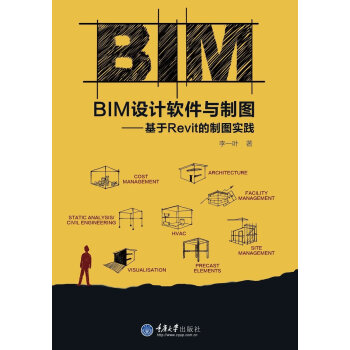
![城市地下管綫探測技術規程(CJJ 61-2017) [Technical Specification for Urban Underground Pipeline Detection and Survey] pdf epub mobi 電子書 下載](https://pic.windowsfront.com/12237029/5a5c6b6fN28274895.jpg)
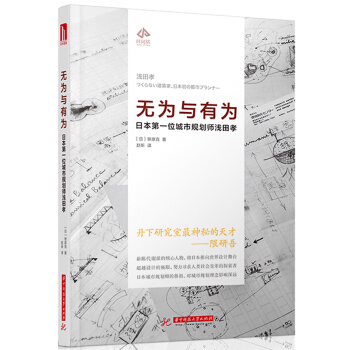
![現代景觀:一次批判性的迴顧 [Modern Landscape Architecture:A Critical Review] pdf epub mobi 電子書 下載](https://pic.windowsfront.com/12238173/5a4b6692N29bc6b84.jpg)
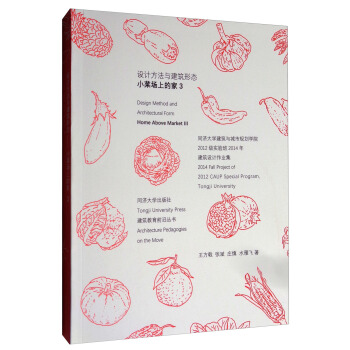
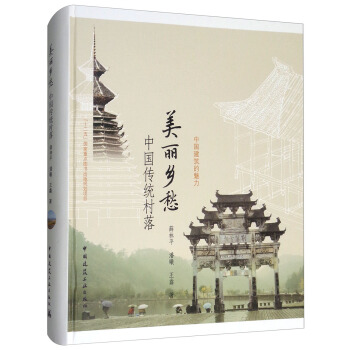


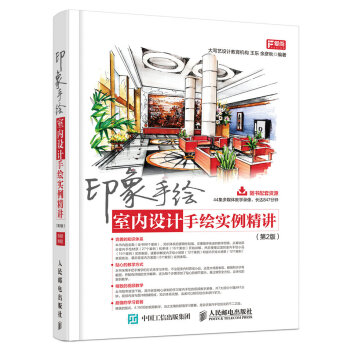

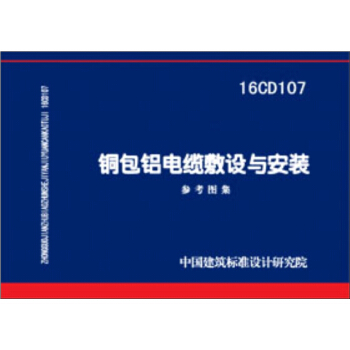
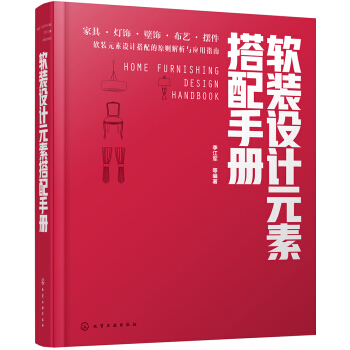
![中華人民共和國行業標準(CJJ/T110-2017):建築與小區管道直飲水係統技術規程 [Technical Specification of Pipe System for Fine Drinking Water in Building and Sub-district] pdf epub mobi 電子書 下載](https://pic.windowsfront.com/12244126/5a2154edNc5a1e97b.jpg)

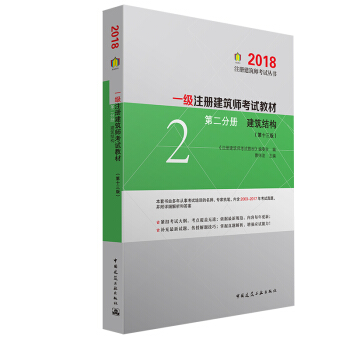
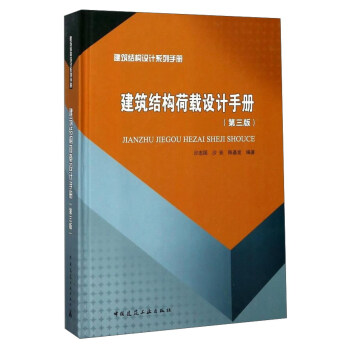
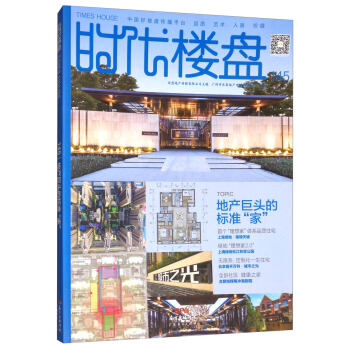
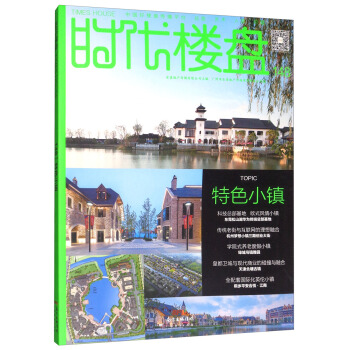

![衝擊迴波法檢測混凝土缺陷技術規程(JGJ/T 411—2017) [Technical specification for testing of concrete defects by impact echo method] pdf epub mobi 電子書 下載](https://pic.windowsfront.com/12245198/5a2154eeNcc512c34.jpg)